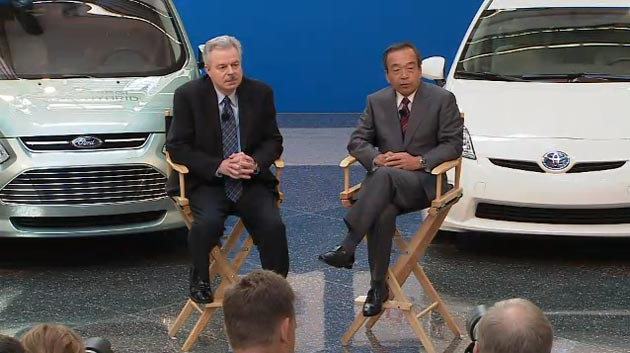Competing OEMs Join Forces, Work On New Hybrid System
 Ford Motor Company and Toyota Motor Corporation announced on August 22 they will equally collaborate on the development of an advanced new hybrid system for light truck and SUV customers.
Ford Motor Company and Toyota Motor Corporation announced on August 22 they will equally collaborate on the development of an advanced new hybrid system for light truck and SUV customers.
Ford and Toyota have signed a memorandum of understanding (MOU) on the product development collaboration, with the formal agreement expected by next year.
Both companies have been working independently on their own future-generation rear-wheel drive hybrid systems. The two now have committed to collaborate as equal partners on a new hybrid system for light trucks and SUVs. This new hybrid powertrain is proposed to bring greater fuel efficiency to a new group of truck and SUV customers without compromising capability. The collaboration will allow them to bring these hybrid technologies to customers sooner and more affordable than either company could have accomplished alone.
The two companies also agreed to work together on enablers to complement each company’s existing telematics platform standards, helping bring more Internet-based services and useful information to consumers globally.
Under the MOU agreement, the two companies will bring the best of their independently developed hybrid powertrain technology and knowledge to a new co-developed hybrid system, which will be used in rear-wheel-drive light trucks arriving later this decade. Specifically, Ford and Toyota will:
-
Jointly develop as equal partners a new rear-wheel drive hybrid system and component technology for light trucks and SUVs
-
Independently integrate the new hybrid system in their future vehicles separately
For years, both Ford and Toyota have been working independently on similar new rear-wheel-drive hybrid systems aimed at delivering higher fuel economy in light trucks and SUVs. When the two companies began discussing this potential collaboration, they discovered how quickly they were able to find common ground.
The rear-wheel-drive hybrid system will be based on an all-new architecture to deliver the capability truck and SUV customers demand while providing greater fuel economy.
While the rear-wheel-drive hybrid system will share significant common technology and components, Ford and Toyota will individually integrate the system into their own vehicles. Each company also will determine the calibration and performance dynamics characteristics of their respective light pickups and SUVs.
In addition, as telematics plays an increasingly more important role in the in-car experience, both companies have agreed to collaborate on standards and technologies needed to enable a safer, more secure, and more convenient in-car experience for next-generation telematics systems. The telematics collaboration relates only to standards and technologies, and each company will continue to separately develop their own in-vehicle products and features.
 Ford Motor Company and Toyota Motor Corporation announced on August 22 they will equally collaborate on the development of an advanced new hybrid system for light truck and SUV customers.
Ford Motor Company and Toyota Motor Corporation announced on August 22 they will equally collaborate on the development of an advanced new hybrid system for light truck and SUV customers.